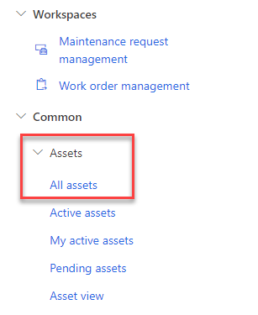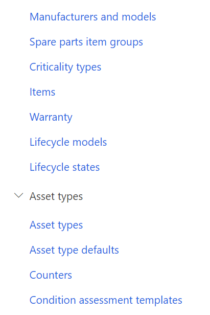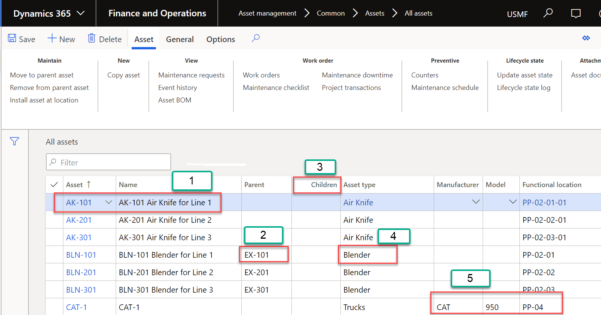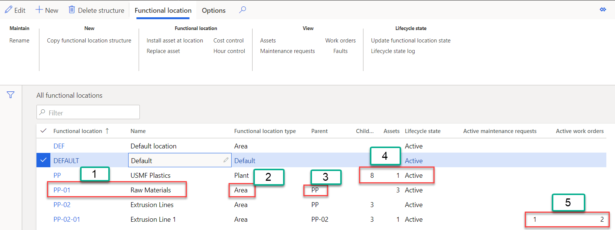The latest release of Microsoft Dynamics Supply Chain Management, available as of October 1, includes a new Asset Management module. The functionality of this module includes:
• Full management of a company’s assets, such as property, plant and equipment. Full hierarchy of assets; an asset can have “parents” and “children” relationships.
• Assets are not required to be a “Fixed asset” in the system and are considered to be independent of the Finance modules.
• The assignment of assets to “functional” locations, which are user created and not required to be related to an actual site and warehouse.
• Every asset and functional location can be assigned Financial dimensions for GL reporting.
• Assets can have regularly scheduled preventive maintenance and work orders assigned to them.
• Efficient spare parts management is integrated with Product information management.
Prior to this release, all of this functionality was only available through an app or ISV. Now, it is out of the box with the latest release. This article will cover the basic functionality of the module and future articles will dive deeper into the details.
First, let’s take a look at the All assets screen. Below you see the menu item, with the standard group of filtered lists:

Then, you can see the different setups related for assets. Some you will see in the All assets screen, and others will be discussed in future articles.

Then, the All assets screen, with numbered features described below:

1. Here you can see the asset ID number which is like most master information in the system; you can have it manually created, as it is here, or an automated number.
2. An asset can have a parent. For example, a typical hierarchy could be a specific warehouse, and its first level child is a specific piece of equipment. One asset can only have one parent, and it is indicated by its asset number as shown.
3. When an asset is a parent, it has children. It can have more than one child and thus this column will only display the number of children.
4. These are Asset types; the typical “type” usage found in other areas.
5. An asset can have a manufacturer and a model number, as shown in these columns. It also shows the “functional location” of the asset; an user defined field. Locations are required for assets.
The next area of setup are the “Functional locations.” It starts with the setup areas as shown below:

The types are, again, a standard classification throughout the system. A Lifecycle model is a required field which defines which Location states can be used. Location states define if, for example, the location is active or ended.
The All locations screen is shown below, again with numbered features described beneath the screen:

1. Location ID and name. As opposed to other similar screens, locations ID’s are all manually created and cannot be an automated sequence. Note that in this example, there is an ID hierarchy. The highlighted location is PP-01, which makes it a child of location PP.
2. This is the column for the location type, a user created type which sets some basic properties as to how to classify assets at that location.
3. This column, Parent, indicates the location ID of the hierarchy. Just like assets, since there can only be one, the ID is shown.
4. The children of the location indicates the number of locations in the hierarchy as well as the number of assets in that specific location.
5. These columns indicate the number of maintenance requests and work orders on assets at that location.
In the next installment, we will discuss the setups and use of maintenance and work orders.
Want to learn more about Dynamics 365 for Finance and Operations? Visit academy.rsmus.com for eLearning courses and information about our hosted training classes in Denver! Or contact our Microsoft Dynamics experts at RSM (855) 437-7201.

 RSMUS.com
RSMUS.com